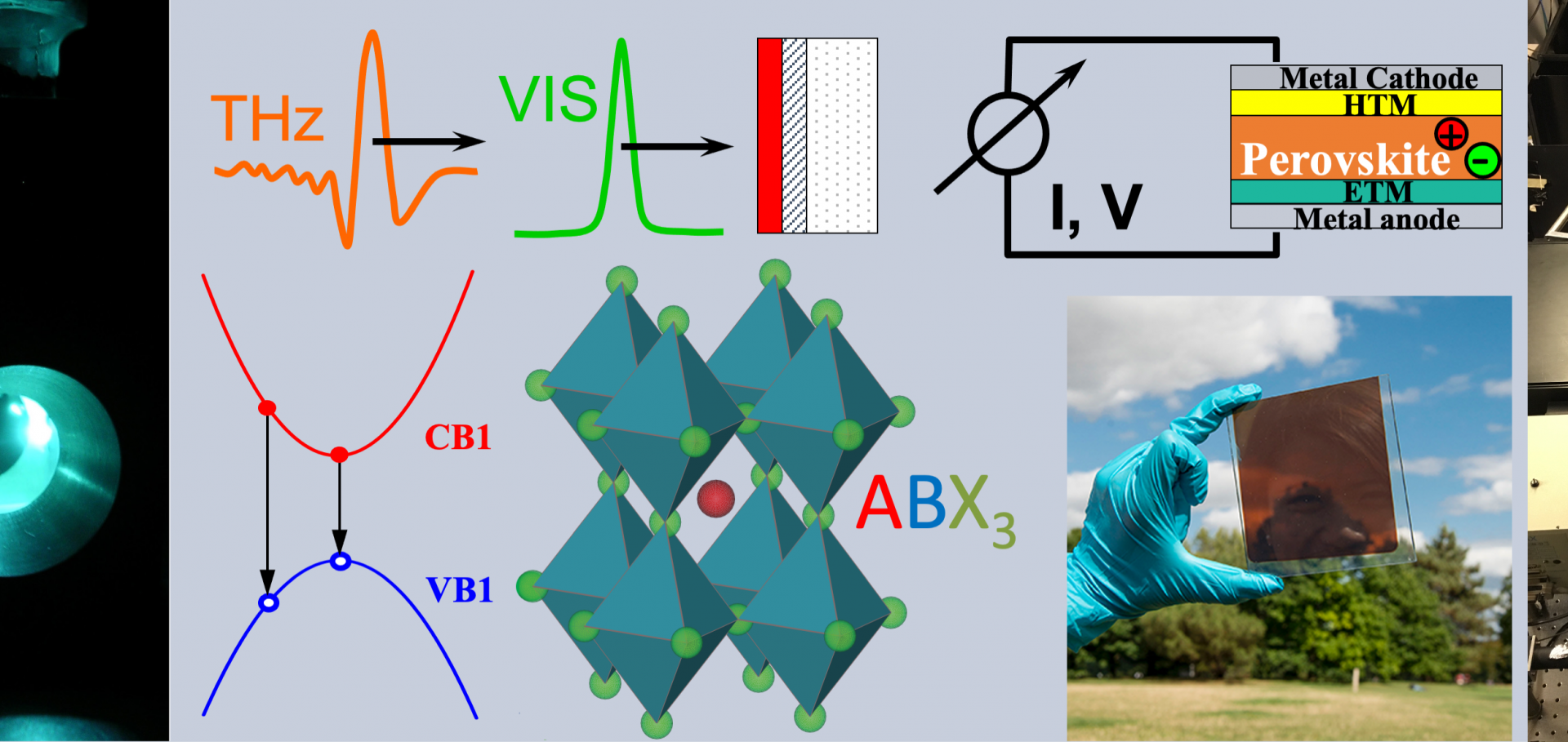Narrowband, angle-tuneable, helicity-dependent terahertz emission from nanowires of the topological Dirac semimetal Cd3As2
Abstract:
All-optical control of terahertz pulses is essential for the development of optoelectronic devices for next-generation quantum technologies. Despite substantial research in THz generation methods, polarisation control remains difficult. Here, we demonstrate that by exploiting bandstructure topology, both helicity-dependent and helicity-independent THz emission can be generated from nanowires of the topological Dirac semimetal Cd3As2. We show that narrowband THz pulses can be generated at oblique incidence by driving the system with optical (1.55 eV) pulses with circular polarisation. Varying the incident angle also provides control of the peak emission frequency, with peak frequencies spanning 0.21 – 1.40 THz as the angle is tuned from 15° - 45°. We therefore present Cd3As2 nanowires as a promising novel material platform for controllable terahertz emission.Temperature dependent reversal of phase segregation in mixed-halide perovskites
Abstract:
Understanding the mechanism of light-induced halide segregation in mixed-halide perovskites is essential for their application in multijunction solar cells. Here, photoluminescence spectroscopy is used to uncover how both increases in temperature and light intensity can counteract the halide segregation process. It is observed that, with increasing temperature, halide segregation in CH3NH3Pb(Br0.4I0.6)3 first accelerates toward ≈290 K, before slowing down again toward higher temperatures. Such reversal is attributed to the trade-off between the temperature activation of segregation, for example through enhanced ionic migration, and its inhibition by entropic factors. High light intensities meanwhile can also reverse halide segregation; however, this is found to be only a transient process that abates on the time scale of minutes. Overall, these observations pave the way for a more complete model of halide segregation and aid the development of highly efficient and stable perovskite multijunction and concentrator photovoltaics.Charge-carrier dynamics of solution-processed antimony- and bismuth-based chalcogenide thin films
Abstract:
Chalcogenide-based semiconductors have recently emerged as promising candidates for optoelectronic devices, benefiting from their low-cost, solution processability, excellent stability and tunable optoelectronic properties. However, the understanding of their fundamental optoelectronic properties is far behind the success of device performance and starts to limit their further development. To fill this gap, we conduct a comparative study of chalcogenide absorbers across a wide material space, in order to assess their suitability for different types of applications. We utilize optical-pump terahertz-probe spectroscopy and time-resolved microwave conductivity techniques to fully analyze their charge-carrier dynamics. We show that antimony-based chalcogenide thin films exhibit relatively low charge-carrier mobilities and short lifetimes, compared with bismuth-based chalcogenides. In particular, AgBiS2 thin films possess the highest mobility, and Sb2S3 thin films have less energetic disorder, which are beneficial for photovoltaic devices. On the contrary, Bi2S3 showed ultralong carrier lifetime and high photoconductive gain, which is beneficial for designing photoconductors.Thermally stable perovskite solar cells by all-vacuum deposition
Abstract:
Vacuum deposition is a solvent-free method suitable for growing thin films of metal halide perovskite (MHP) semiconductors. However, most reports of high-efficiency solar cells based on such vacuum-deposited MHP films incorporate solution-processed hole transport layers (HTLs), thereby complicating prospects of industrial upscaling and potentially affecting the overall device stability. In this work, we investigate organometallic copper phthalocyanine (CuPc) and zinc phthalocyanine (ZnPc) as alternative, low-cost, and durable HTLs in all-vacuum-deposited solvent-free formamidinium-cesium lead triodide [CH(NH2)2]0.83Cs0.17PbI3 (FACsPbI3) perovskite solar cells. We elucidate that the CuPc HTL, when employed in an “inverted” p–i–n solar cell configuration, attains a solar-to-electrical power conversion efficiency of up to 13.9%. Importantly, unencapsulated devices as large as 1 cm2 exhibited excellent long-term stability, demonstrating no observable degradation in efficiency after more than 5000 h in storage and 3700 h under 85 °C thermal stressing in N2 atmosphere.


